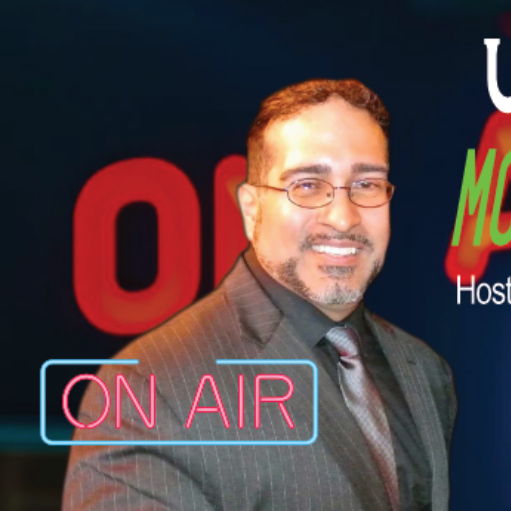There’s been a lot of talk about tariffs lately. And for good reason. A cornerstone of President Trump’s re-election, tariffs are enacted on global imports to a degree last seen in 1930.
Tariff supporters say they’re the best way to re-spark U.S. manufacturing after decades of decline. Opponents worry that, like the Smoot Hawley Act of 1930, tariffs will not only fail to reboot manufacturing but send the economy into a tailspin.
The debate intensified this week when President Trump rolled out widespread tariffs on all global imports that were higher than anticipated. The news sent the stock market reeling, causing the S&P 500 and Nasdaq Composite to tumble over 4% and 5%, respectively.
Related: Veteran fund manager who forecast S&P 500 crash unveils surprising update
The tariffs are arriving even as the economy is arguably on shakey ground, a fact likely not lost on Federal Reserve members, including Vice Chairman Philip N. Jefferson.
In a speech on April 3, Jefferson outlined his current economic outlook, and given his role in helping determine interest rate cuts, investors should pay attention to what he said.
 Philip Jefferson, Vice Chair of the Federal Reserve, weighed in on the economy.
Philip Jefferson, Vice Chair of the Federal Reserve, weighed in on the economy.
The economy shows signs of sputtering
The Federal Reserve has its back against the wall.
Fed Chairman Jerome Powell incorrectly argued that inflation was transitory in 2021, forcing him to switch gears and adopt the most restrictive and hawkish monetary policy since Fed Chair Paul Volcker battled inflation in the early 1980s.
Related: Billionaire Michael Bloomberg sends hard-nosed message on economy
Powell’s war on inflation worked but was costly. Inflation has retreated below 3% from over 8% in 2022, but higher interest rates capped economic growth, leading unemployment to climb to 4.2% from 3.5% as recently as 2023.
Worse, over 275,000 Americans lost their jobs in March, according to Challenger, Gray, & Christmas, as Department of Government Efficiency job cuts kicked in. That figure was up a massive 205% year over year, and the biggest announced job losses since Covid in 2020.
The increasing trend in joblessness caused the Fed to lower its benchmark Fed Funds Rate in the fourth quarter of 2024. Unfortunately, we’ve clearly not seen any improvement in the jobs market, and those interest rate cuts appear to have rekindled inflation. The Consumer Price Index reports inflation increased to 2.8% in February from 2.4% in September.
Sticky inflation and unemployment are causing a drop in economic growth. The Atlanta Fed’s GDPNow forecasts that the first-quarter GDP will be negative at -2.8%. That measure will likely improve as more data lands, but it seems likely that the first-quarter GDP will drop from the 3.1% pace recorded in the second and third quarters of 2024.
Fed Vice Chair warns on slowing economy
The prospect of a slowing economy isn’t lost on Fed Vice Chair Jefferson, who reminded Americans this week that Fed officials have broadly been retrenching their outlooks for U.S. economic growth in 2025.
” Fed policymakers and many private-sector forecasters expect growth to continue, they broadly anticipate a slower pace of expansion this year,” said Jefferson on April 3. “In the SEP released after the March FOMC meeting, the median participant projected GDP to rise 1.7 percent this year and to move up a bit below 2 percent over the next two years.”
The prospect of slowing may worsen given consumer confidence has plummeted recently, and that was before tariffs were announced by President Trump on “Liberation Day” ranging from a baseline 10% on most imports to up to 54% on China.
More experts:
- Treasury Secretary has blunt 3-word response to stock market drop
- Fed chairman has blunt 9-word response to recession talk
- Billionaire Ray Dalio’s blunt message on economy turns heads
“Resilient consumer spending has been the driving force of the current economic expansion. More recently, a few signs have emerged that suggest that some of the factors supporting last year’s strong spending growth may be weakening,” said Jefferson. “Readings at the start of this year suggest less support for growth from household spending in the first quarter. The most recent Beige Book stated that contacts reported consumer spending was lower, on balance, with still solid demand for essential goods but increased price sensitivity for discretionary items, particularly among lower-income shoppers.
The Conference Board’s Expectations Index is already at 65, below a reading of 80 that has suggested past recessions. If tariffs can’t be fully absorbed by U.S. companies, such as retailers, and are passed along to consumers, it could lay the groundwork for a recession later this year given consumers have little appetite for discretionary spending already.
And don’t necessarily count on manufacturing to pick up the slack in the economy from declining services activity.
“Like consumer sentiment, however, readings on business sentiment have also slipped,” said Jefferson. “If uncertainty persists or worsens, economic activity may be constrained.”
Granted, weak sentiment doesn’t always predict recession, and Jefferson points out Americans are resilient. However, a lot appears to be going wrong, and the jobs market isn’t likely to offer much consolation.
“I anticipate that there could be some modest softening in the labor market this year, said Jefferson. “The pace of job gains has cooled from its post-pandemic peak.”
Related: Jim Cramer offers blunt one-word reaction to 20% tariffs
